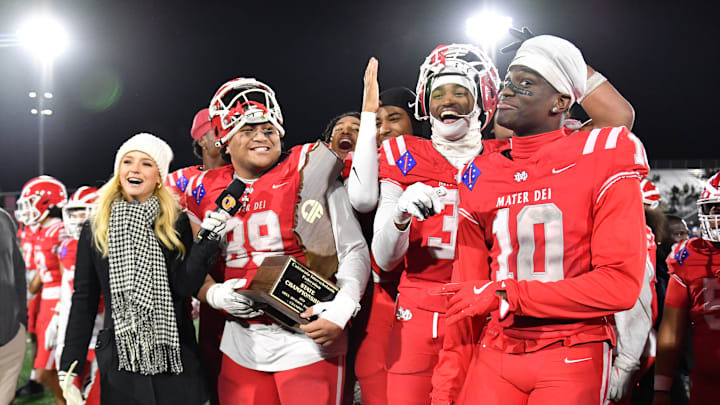How the NIL era is impacting high school athletes and who's cashing in?

Since California became the first state to allow high school athletes to profit from their name, image and likeness (NIL), a new generation of teenage sports stars is navigating a world once reserved for college and professional players.
A high-profile example of a California athlete cashing in on the NIL is Juju Watkins. Before she donned the red and gold uniform, Watkins signed a deal with Nike back in 2022 while being a senior at Sierra Canyon High School. Her brand only grew from there as she emerged to be one of the most marketable young players in the country. The young star's journey highlights how NIL is transforming the high school landscape, turning student athletes into national brand ambassadors before they have walked across that graduation stage.
Juju is just one example and one player of how the NIL deals have affected the lives of those involved in high school sports. Mater Dei High School's renowned athletic program was linked with Playfly Sports for a 10-year multimedia rights deal valued at around $1 million annually. This package is to help student athletes navigate the NIL landscape and to enhance the already prestigious private high school. Goes to show the rich get richer.
Playfly, known for its collegiate athletics, seeks to push Mater Dei onto more eyes around the country to break through substantial revenue growth. The 10-year collaboration is surely to amplify the success of the team and their student athletes, but also bring in new sponsorship opportunities that go with the school's already extensive legacy of excellence.
Despite this large influx of funds it does not directly provide compensation for Mater Dei High School stars as California regulations prohibit high schools from facilitating NIL deals for their students.
Schools like Mater Dei are capitalizing media partnerships to enhance an already historic athletic program, but for most of the NIL landscape, it still is a mixed bag for most high school athletes.
The NIL reality is mainly shaped by regional policies, limited marketibility and time contraints. This divide has begun to grow into a realistic expectation as the NIL era seeps into the high school level.
Experts estimate that less than 1% of high school student-athletes nationwide secure significant NIL deals. For instance, in North Carolina, the average NIL deal for high school athletes is valued to be between $60 to $120 with commitments of three to four hours.
This showcases the need for equipping the financial literacy skills needed to manage newfound income, understanding tax obligations and making informed financial decisions that positively impact their future. Recognizing this need, some schools and institutions have started programs to strengthen financial education among student athletes.
For example, certain California colleges have begun courses centered towards financial literacy designed to prepare these athletes for the ever-changing landscape of NIL. These programs aim to cover all bases to safeguard young athletes from potential exploitation and ensure they can maximize their NIL opportunities.
As more states look to adopt NIL policies for high school athletes California has pushed to compensate their young stars being the example of the benefits and challenges monetizing young athletic talent. With this growing trend, it will be crucial to ensure that the opportunities presented by NIL don't dampen a player's growth but to fully realize their potential.
